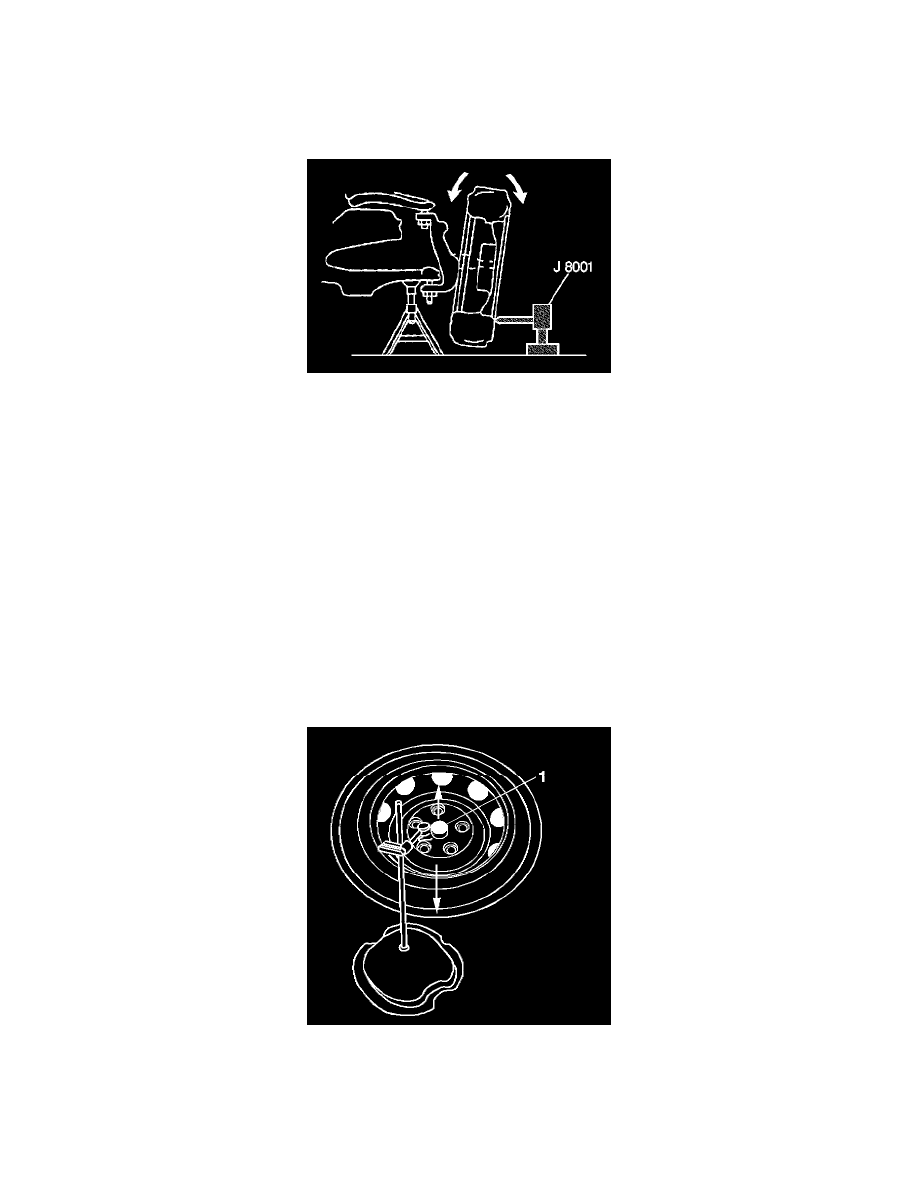C 1500 Truck 2WD V6-4.3L VIN X (2003)

Ball Joint: Testing and Inspection
BALL JOINT INSPECTION
TOOLS REQUIRED
J 8001 Dial Indicator
1. Raise and support the vehicle. Refer to Vehicle Lifting.
IMPORTANT:
-
The vehicle must rest on a level surface.
-
The vehicle must be stable. Do not rock the vehicle on the floor stands.
-
The upper control arm bumper must not contact the frame.
1. Support the lower control arm with a floor stand or jack, as far outboard as possible.
2. Clean and inspect the ball joint seals for cuts or tears. If the ball joint seals are damaged, replace the ball joint.
IMPORTANT: If a seal is cut or torn, replace the ball joint.
3. Check the wheel bearing for looseness. If looseness in the wheel bearing is present, refer to Wheel Bearings Diagnosis. See: Testing and
Inspection/Component Tests and General Diagnostics/Wheel Bearings Diagnosis
4. Check the ball joints for horizontal looseness.
4.1.
Position the J 8001 dial indicator against the lowest outboard point on the wheel rim.
4.2.
Rock the wheel in and out while reading the dial indicator. This shows horizontal looseness in both joints.
4.3.
The dial indicator reading should be no more than 2 mm (0.080 in). If the reading is too high, check the lower ball joints for vertical
looseness.
5. For 4WD vehicles, place a J 8001 dial indicator (1) against the spindle in order to show vertical movement.
NOTE: Do not pry between the lower arm and the wheel drive shaft boot or in such a manner that the ball joint seal is contacted.
Damage to the wheel drive shaft boot will result (4WD).
